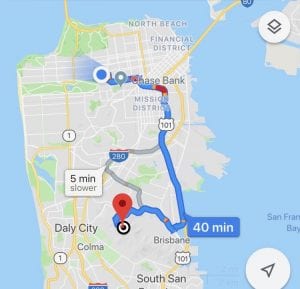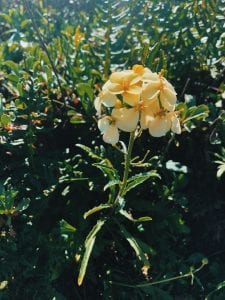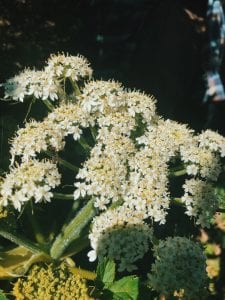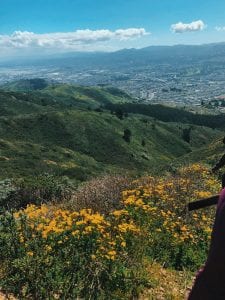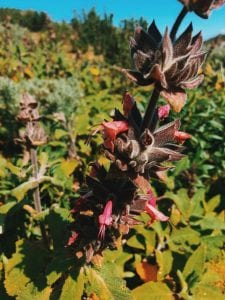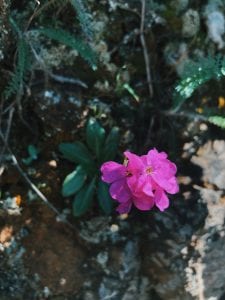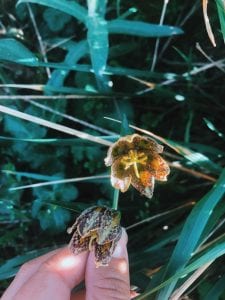On March 21st, our botany class visited the San Bruno Mountain State & County Park, which is located in northern San Mateo. Although there are a variety of microenvironments observed in the San Bruno Mountain, the most common consist of coastal scrub, chaparral, and grasslands. There are 14 rare or threatened plant species (such as the Franciscan wallflower and Coast rock cress), as well as host and nectar plants for endangered butterflies, found in the San Bruno Mountain.
Franciscan Wallfower (Erysimum franciscanum) is a perennial herb endemic to the northern California coast and belonging to the Brassicaceae family. The arrangement of its leaves varies between opposite and whorled. The leaves themselves are sessile, simple, and linear in shape with narrowly acute apices. The leaves also have spines at the margins. As is common in the Brassicaceae family, the flowers of the Franciscan wallflower have 4 cream-colored petals arranged in a cross shape and have 6 stamens total (4 long and 2 short stamens). Its flowers are arranged in a raceme inflorescence. Franciscan wallflowers prefer coastal scrub and can thrive in a variety of soils, including serpentine soil.
Common cow parsnip (Heracleum lanatum) is a perennial herb belonging to the Apiaceae family. The common cow parsnip is the only species of this genus found in California. The stems of the common cow parsnip are succulent – Native Americans would peel and eat the stalk, giving it its other common name “Indian celery.” The receptacle bearing the flower inflorescences is pubescent. The leaves are large (growing up to 40 centimeters) and are palmately lobed and highly dissected. The margins of the leaves are also dentate. As is common throughout the Apiaceae family, its flowers are arranged in a compound umbel inflorescence. The individual flowers are small, white, and radially symmetrical with 5 petals. The flowers have long 5 long anthers that roughly span the length of the petals.
The California golden violet (Viola pedunculata) is a perennial wildflower often found in coastal regions of California. The leaves of the California golden violet are basal and display palmate venation.The overall shape of the leaves are chordate-obovate, with lobate bases and rounded-obtuse apices. The flowers are bisexual and bilaterally symmetrical. The flower consist of 5 stamens, 1 pistil, and 5 yellow petals; the lower petal has a brown-purple coloring at the base. It prefers to grow in rich soil on slopes (although we found this one on relatively flat land) and in woodlands and coastal sage scrub communities.
This was one of the sunniest hikes we’ve been on, which was surprising considering how rainy the rest of the week had been. The views of the city throughout the hike were amazing. I’m glad we were able to come here before the field quiz, as we got to see some old friends and meet new ones such as the Franciscan wallflower and rock phacelia (even if later I wasn’t as thrilled about all the new additions to the material we needed to know for the field quiz). To top off the beautiful day hiking in the San Bruno Mountain, we stopped by In n’ Out for some much needed fuel (though it wore off pretty quickly and resulted in a deep food coma on the ride back to campus).
Honorable Mention Species
